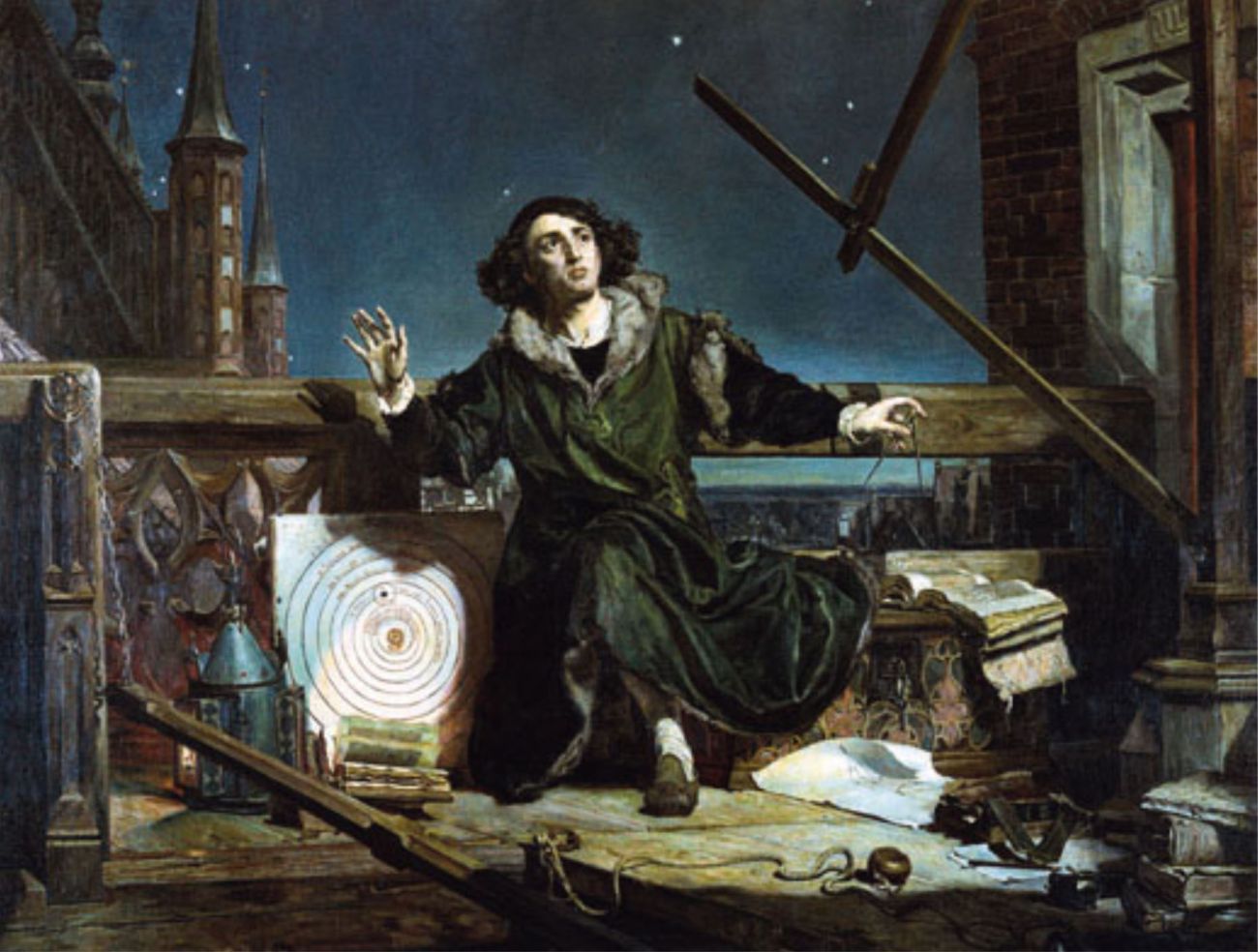
Nicolaus Copernicus
Polish astronomer Mikołaj Kopernik, better known as Nicolaus Copernicus, is one of the greatest figures in science. He placed the sun as the center of the solar system, not the earth, and thereby provided a new understanding of the planets and their movement — a scientific revolution.
After years of study and just before his death in 1543, Nicolaus Copernicus published his masterpiece, On the Revolutions of the Heavenly Spheres (De Revolutionibus Orbitum Coelestium). It contains the mathematical and astronomical data that form the basis of the Copernican system.
Central to his model is his proposal that the earth has three distinct motions: a daily axial rotation, an annual rotation about the sun, and a third motion related to precession (the 25,800-year long cycle reflecting the changing position of the Earth in space). In the book’s introduction, Copernicus credits his heliocentric hypothesis to the ideas of ancient Greek writers such as Aristarchus and Philolaus.
